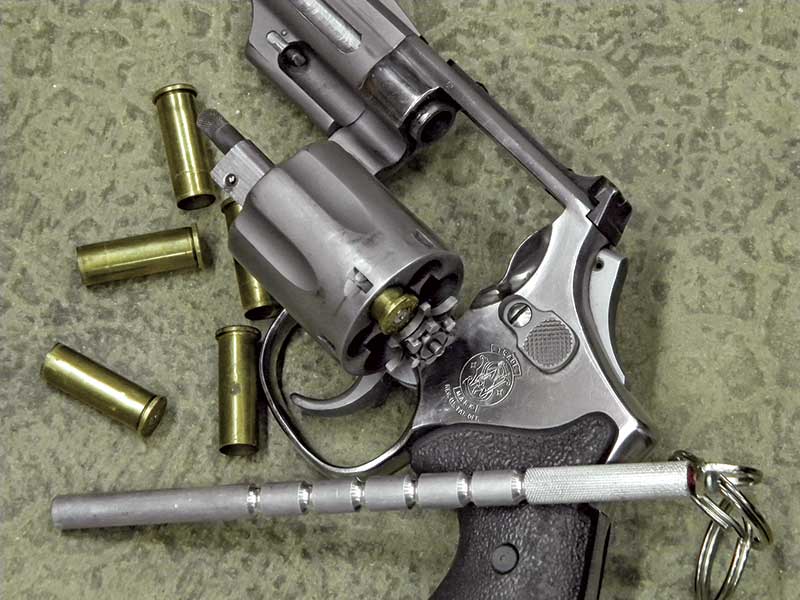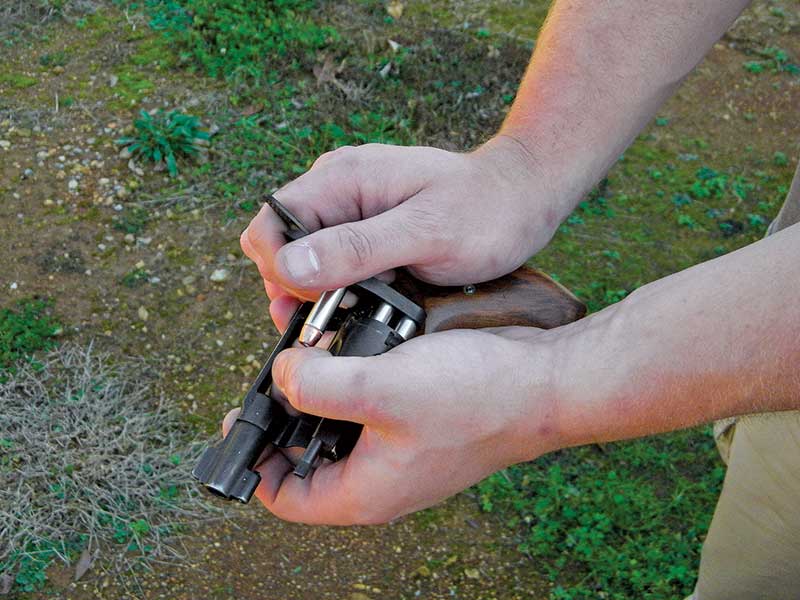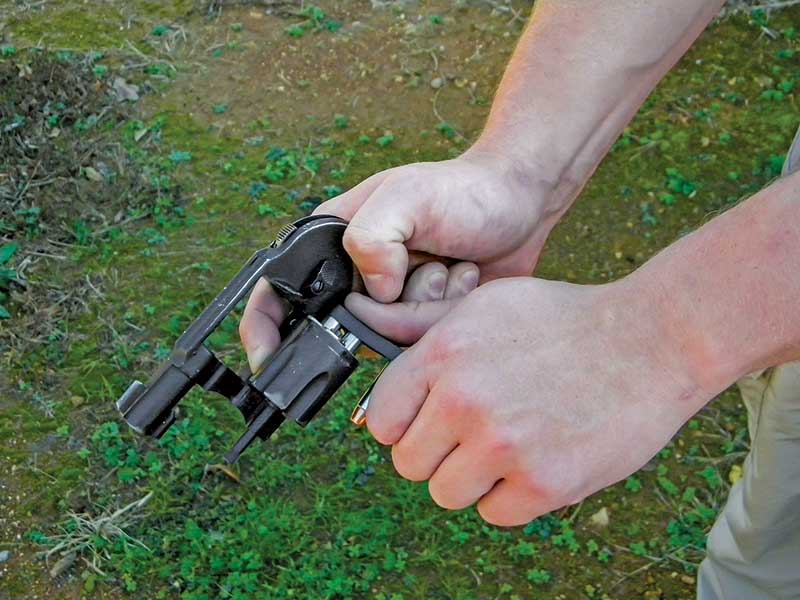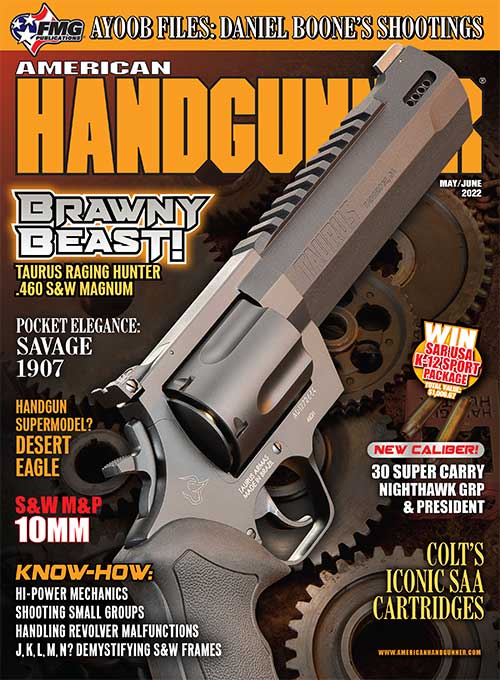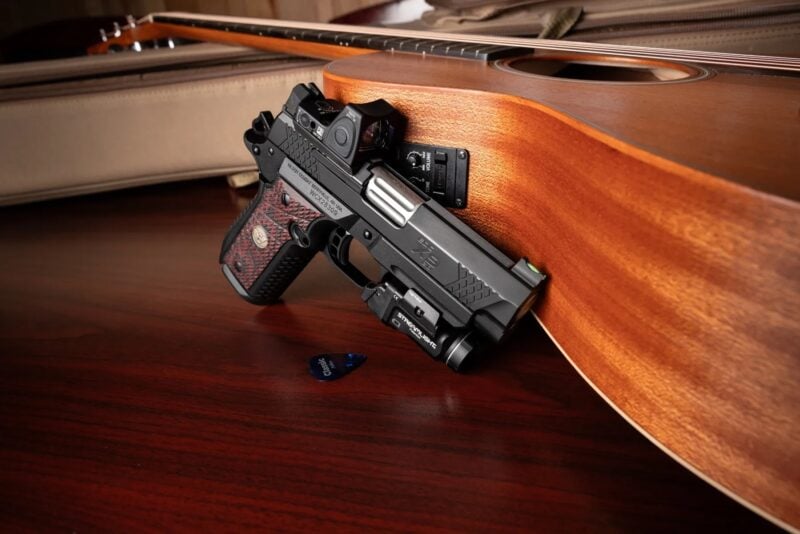Tactics and Training: Revolver Malfunctions
Revolvers are great for self-defense. They come in various sizes, an assortment of effective calibers and are easily carried and concealed. A well-maintained revolver is more reliable than a semi-auto during danger-close conflict, typical self-defense. The wheel gun can be jammed into the threat’s ribs and fired without worry about a slide being pushed out of battery or contact retarding the slide’s action and creating a stoppage. “Limp-wristing” won’t create a stoppage; you can fire reliably from unorthodox positions. But, like any other piece of machinery, sometimes malfunctions occur. Learning to fight with a revolver includes developing the skills to fix a stoppage.
Prevention
Revolvers are easy to shoot,” they say. “Point and pull the trigger.” The same can be said of both revolvers and semi-autos. To use either properly — safely and efficiently — requires a certain degree of skill but the truth is revolvers are more complicated to learn how to use competently than a semi-auto. Developing the proper manual of arms for the wheel gun helps prevent stoppages.
The shooter creates many malfunctions by improper gun handling and lack of practice. Learning how to manipulate the revolver begins by determining which hand you’ll hold it in during manipulations. It can stay in the strong hand or, you can transition it to the support hand. Both techniques are acceptable. Discovering your preference determines how you’ll load, unload, reload and clear malfunctions. Plenty of practice is required to become efficient.
Maintaining your wheel gun reduces the possibility of a stoppage. As opposed to the “press” on a semi-auto, stroking the trigger puts a lot of tight tolerance parts in motion. Keep your wheel gun well maintained and clean; it’s much more critical with revolvers than semi-autos. Faulty ammo will create a stoppage. High or “blown” primers will cause problems. I’ve seen steel case ammo where the bullets slipped forward from the case and out the cylinder during firing. A “squib” load — not enough powder to clear cylinder/barrel — can be a real danger for the shooter. Quality ammo only.
Fix It
Even after taking the proper precautions, stoppages do occur. Fixing the problem relies on “wheel-gun” skills developed through technique and repetition. You stroke the DA trigger instead of the “press” used on the semi-auto. If the hammer drops but only produces a “click,” keep the muzzle on target and your eyes on the sights. Stroke the trigger again, rotating the cylinder to the next round. If you had a bad round or light primer strike, the pistol fires. Should you get a second “click,” the gun is telling you it’s time to reload.
You attempt to fire, applying pressure to the trigger, but it won’t move to the rear. Usually, this indicates the cylinder isn’t completely locked into place. Again, stay on the target and sight. Your finger comes off the trigger, and the support comes off the pistol and locks the cylinder in place. Reacquire a two-handed grip — assuming there’s time — and fire.
If the cylinder won’t open for a reload, you’ll have to bump it out. It’s hard on the pistol, so don’t do it regularly, but you do what’s necessary in a fight. A failure to properly eject rounds from the cylinder, short stroking the ejector rod, can allow a case to be trapped underneath the extractor. You’ll need some type of rod to push through the front of the cylinder to clear the case.
As with all gun handling skills, your goal is efficiency. An introduction to the correct techniques — training — must be followed up with plenty of repetition. Most repetition is “dry,” using inert training rounds to practice. Even after learning the revolver’s manual of arms, it’s always best to have a “Plan B.” When a stoppage occurs, or the gun is empty, your most efficient response is a “New York Reload,” transitioning to another weapon. A jam or breakage takes time and tools to correct. Having some type of backup weapon is mandatory.
After well over 100 years of service, revolvers are still excellent weapons for defensive use if you’re willing to invest the time to learn how to use them. Even if you don’t plan to be a wheel-gunner, learn enough to use one in a battlefield pickup scenario. Plus, revolvers are “more funner” to shoot than semis. They’re very addictive.
Subscribe To American Handgunner

Get More Personal Defense Tips!
Sign up for the Personal Defense newsletter here:


